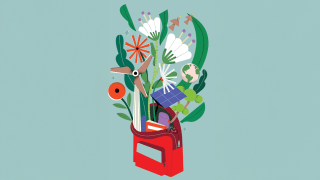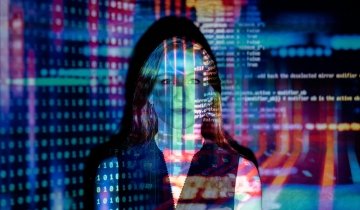Global environmental degradation due to climate change is intensifying, and to ensure students have the information they need to become environmentally responsible citizens, teachers need effective methods to add to their pedagogical toolbox.
Climate change and sustainability education can be integrated across disciplines at all grade levels, enriching existing content or serving as the primary focus of curricular units. These tips are suggestions on how to support students in understanding both the complexity of climate change and their role as change agents for social, economic and environmental sustainability.
-
Frame sustainability as a humanitarian, justice-oriented issue with social, environmental and economic ramifications, using the United Nations’ 17 Sustainable Development Goals (SDGs).
The SDGs focus on interdisciplinary issues related to curricula already being taught. Inquiry-based pedagogy can be used to engage students with the goals, fostering critical thinking and student agency at all grade levels. For example, Goal 11, Sustainable Cities and Communities, aligns with many of the concepts in social studies. Students might investigate urbanization and sustainable ways to manage excessive consumption and waste in urban centers. The SDGs provide students with a comprehensive overview of sustainability from the perspective of equity and justice.
-
Start with students’ interests to increase student engagement.
After reviewing the SDGs, students will be better equipped to select a focal issue for studying sustainability. Letting students decide which topics to study allows teachers to learn along with them, highlighting that no one can be an expert on every aspect of sustainability. Information rapidly changes as scientific solutions proliferate, social impacts and movements become more influential, and the inequitable distribution of the harms of climate change become more transparent.
Student-selected topics can be integrated into the development of literacy skills such as reading, creating multimodal presentations and discussing the problem. For example, students might want to focus on Goal 2, Zero Hunger. To help them understand the relationship between what they eat and sustainability, ask them to examine what they eat over the course of one day, considering where the food was sourced and what waste it created. Ask them what sustainable eating might involve. Then, let students choose one aspect of what they learned for more in-depth study. Perhaps they could examine why there is so much waste in the cafeteria and work on reducing it by starting a composting campaign.
-
Examine external messaging and its impact on how students understand sustainability.
Visual, digital and print bombardment of information that may or may not be true is often impossible to navigate for students. Share “discourses of delay” that redirect responsibility, push non-transformative change, emphasize the downsides and promote narratives of surrender. Students will then gain skills to recognize when messages are being manipulated to sound aligned to sustainability but are working against it.
Some examples of such messaging:
-
Focusing on recycling to redirect responsibility away from corporate production of non-sustainable materials to the consumer
-
Pushing non-transformative solutions, like oil company ads purporting how “green” they are, while not addressing continuing extraction
-
Emphasizing the downsides of sustainable practices by claiming that people do not want their lifestyles disrupted
-
Surrendering to doom-and-gloom narratives
Students can analyze situations like these and collaborate to produce truthful, solutions-focused messaging.
These three ideas all support critical thinking, student-centered pedagogies and problem solving. Engaging students in solutions to sustainability may also prompt them to take larger actions for social and environmental justice.
References:
Joseph Fiksel et al., “EPA at 40: Bringing environmental protection into the 21st century,” Environmental Science & Technology 43, no. 23 (2009): 8716-8720, f.
Timothy O’Shea, “Using inquiry-based learning to encourage student agency,” Edutopia, Dec. 12, 2023, .
William F. Lamb et al., “Discourses of climate delay,” Global Sustainability 3 (2020).
“Sustainable Development Goals,” United Nations.





